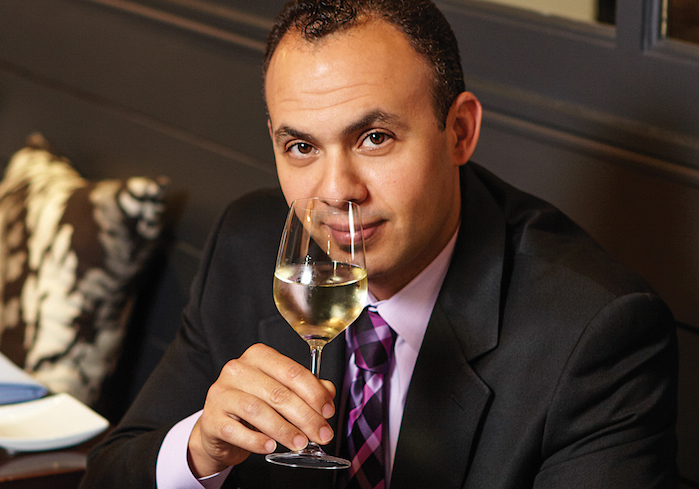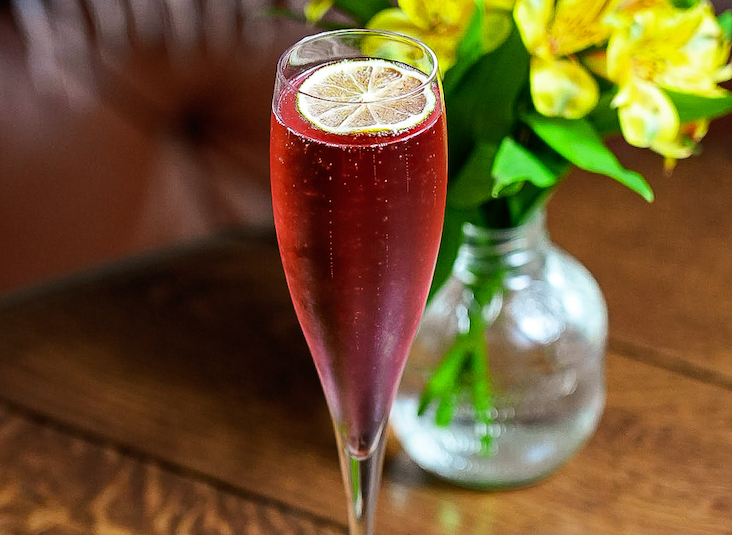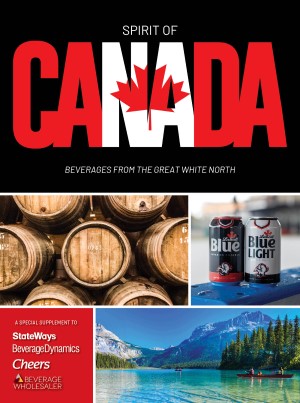Chardonnay is the chameleon of the wine world: Its character deftly and drastically changes depending on terroir and technique. It’s also a perennial guest favorite and a terrific match with food.
There is great chardonnay coming from many different regions and made in several different styles. We asked wine pros for their picks for chardonnays for by-the-glass service.
Kyle Nathan, Sophia’s Supper Club, Austin, TX
“Chardonnay is an amazing grape because is can be manipulated in many different ways,” says Sophia’s Supper Club manager/sommelier Kyle Nathan. “It can be oaked or not, malo’d [put through malolatic fermentation] or not, and the climate has a significant impact on the flavor profile and structure.”

Kyle Nathan
The 85-seat, Italian-American cuisine restaurant offers two chardonnays by the glass, priced from $12 to $21, and six by the bottle, priced $70 to $650.
Guests these days know if they prefer a buttery and oaky style or a tart and snappy one, Nathan adds, and many are increasingly opting for the latter.
The 2013 Ramian Reserve chardonnay ($90 a bottle) is made in a racier style than other Napa offerings, with green apple, Meyer lemon, white pepper, sharp acidity, hints of almonds and a touch of vanilla and cedar. It works well with light, flaky fish such as grilled whole branzino.
Italy’s northern Alto Adige region is also a region cranking out balanced, food-friendly bottles. One is the 2015 Andriano “Somerato” chardonnay ($12 a glass, $46 a bottle), which is done unoaked and has notes of yellow apple, lemon, lime and golden pear.
The wine’s vibrant acidity cuts through the garlic au jus poured tableside with the brick-roasted chicken.
Likewise, the 2015 Terlano chardonnay ($73 a bottle), also from Alto Adige, forgoes oak and offers up tart apple, citrus, white flowers, medium-body and minerality. “When I am pairing chardonnay with food, I think a lot in terms of texture and acidity,” Nathan notes. These wines fit the bill for lighter fare.
Kerstin Mikalbrown, Kinship, Washington, D.C.
Chef Eric Ziebold’s 80-seat New American restaurant offers three chardonnays by the glass, priced $15 to $32, and 38 by the bottle, priced $45 to $375. Though several regions are represented on the list, there is a focus on one classic area: Burgundy.

Kerstin Mikalbrown
“I think of chard as less of a trendy wine and more of a consistent classic,” says beverage director Kerstin Mikalbrown. “White Burgundy is like a perfectly tailored little black dress—it may never be the latest trend, but it will always be in style.”
Kinship sells the 2013 Le Clos du Château de Puligny-Montrachet for $24 a glass. Mikalbrown loves this wine because it drinks like a classic Puligny-Montrachet—elegant, balanced and with the right amount of acidity—at a significantly lower cost. She pairs it with the restaurant’s lobster French toast.
Mikalbrown describes the Paul Hobbs chardonnay ($32 a glass) from California’s Russian River Valley like “wearing a light cashmere sweater on a bright sunny day in early springtime.” In other words, it’s luxurious, not heavy, and leaves the palate both warmed and refreshed at the same time. She matches it with the ultimate comfort dish, Kinship’s signature roast chicken.
Because a chardonnay’s style often comes from winemaking decisions vs. the inherent qualities of the grape, Mikalbrown finds she can pair just about any dish with one bottle or another. “I always look to balance the weight of both the dish and the wine, and the balance of acidity and richness.”
Frank Hess, Ocean Prime, Philadelphia
General manager and certified sommelier Frank Hess has seen an uptick in the popularity of cool-climate and terroir-driven chardonnays, especially with young guests. “They tend to look for wines where the ‘juice’ speaks for itself, with minimal handling from the winemaker,” he says.

Frank Hess
“The oak and butter bombs of 10 years ago are out of favor,” he says. Guest are now gravitating to chardonnay styles “with high acid, bright tropical fruits and notable minerality.” Hess is also seeing a trend in biodynamic and organic wines.
The 236-seat, modern American restaurant offers seven chardonnays by the glass, priced $10 to $28, and 23 by the bottle, priced $40 to $250. One option is the 2013 Greystone Cellars chardonnay ($10 a glass, $40 a bottle).
A collaboration between Markham Winery and the Culinary Institute of America, the Greystone Cellars chardonnay is blended by chefs for chefs, Hess points out. The wine boasts green apple up front, minerality and a creamy texture that’s a seamless partner for Sonoma goat cheese ravioli.
The 2013 Waugh Cellars chardonnay ($19 a glass, $76 a bottle) hails from California’s cooler Russian River Valley appellation. Hess describes it as a white wine for red wine drinkers, with flavors of ripe peach and nectarine evolving into sweet vanilla, minerality and mouthwatering acidity.
He likes surprising guests by pairing it with Ocean Prime’s filet mignon. “Today, younger drinkers want the unusual but delicious pairing,” Hess points out.
Marissa Copeland, David Burke Kitchen, New York
As others have noted, more guests are embracing unoaked styles of chardonnay, says sommelier Marissa Copeland. “People are interested in what can come through the [wine] as it expresses the place it grew.” This is done by letting the terroir shine through vs. overmanipulation in the cellar, she says.

Marissa Copeland
The 130-seat American restaurant inside The James Hotel in New York sells four chardonnays by the glass, priced $14 to $35, and more than 70 by the bottle, priced around $65 to $125.
Copeland cites the 2014 Dr. Konstantin Frank ($14 a glass) as an especially fun get for the menu. Why? It affords her the opportunity to pour a local wine made by the man who started the Finger Lakes appellation.
The wine’s touch of oak, apple freshness and refreshing acidity work nicely with roasted chicken breast with braised leek and potato hash.
Copeland also recommends two white Burgundies that are on opposite sides of the spectrum. The 2012 Vincent Dauvissat “Le Foret” Chablis 1er Cru ($18 for a half glass, $35 a glass) is crisp, focused and “crazy good.” She recommends it with baked oysters with bone marrow butter.
On the flip side, Copeland calls the 2011 Domaine Louis Latour Corton-Charlemagne Grand Cru ($18 a half glass, $35 a glass) “no-joke Burgundy. Tense, layered, even brooding, [with] rocks in your mouth and tons of power.”
Copeland recommends ordering it with David Burke Kitchen’s lobster toast and focusing on the wine as the meal. The lobster toast in the background keeps the wine front and center, refreshing the mouth as you savor the lingering finish.
Scott McSimov, Emeril’s New Orleans Fish House, Las Vegas
With Burgundian producers in Oregon and American producers abroad, the line between “Old World” and “New World” chardonnay has blurred a bit, says sommelier Scott McSimov. It’s also no longer just about the oak or fruit, he adds, but balance. “It’s more about the relationship between the fruit expression, minerals, acid and oak influence than just the contrast or preference between oaked vs. unoaked.”
The 266-seat restaurant, which features chef Emeril Lagasse’s take on New Orleans’ style of shellfish and seafood, offers a few chardonnays by the glass and 156 by the bottle two by the half-bottle and three magnums.
The 2014 Mer Soleil Reserve chardonnay ($12 a glass) from California’s Santa Lucia Highlands begins with a blast of ripe pineapple, tropical fruit and creamy vanilla. It’s buttery and medium-bodied with balanced acidity, “an oaked chardonnay done right, with great fruit expression, creamy texture and a bright finish,” says McSimov. He recommends it with pecan-crusted Texas redfish with Anson Mills pepper-jack cheese grits, ratatouille and Creole meunière sauce.
The 2015 Joseph Drouhin Chablis Vaudon ($13 a glass) has green apple and mineral aromas, with a light-bodied palate with flint and stone fruit and a grapefruit finish. McSimov pairs it with freshly shucked oysters with watermelon mignonette and kicked-up cocktail sauce.
As guests become increasingly knowledgeable about chardonnay, they are more willing to venture out of their comfort zones. They are open to trying new chardonnay regions, styles and producers, McSimov notes.
Jon Cross, Hinoki & The Bird, Los Angeles
“Unoaked chardonnays give off a much more steely, brighter feeling, which is easier to become accustomed to for someone who is just getting into chardonnay or doesn’t like that robust, bold oak flavor,” says wine director Jon Cross.

Jon Cross
He adds that these wines are also both less expensive and less time-consuming to produce. A 138-seat Japanese-influenced, New American restaurant, Hinoki & The Bird features two chardonnays by the glass, priced $13 to $22, and 100 to 120 by the bottle, priced from $45 to $2,000.
On the unoaked side, Cross likes the 100% stainless-steel-fermented 2014 Domaine Louis Michel et Fils “Montée de Tonnerre” Chablis 1er Cru. Priced at $19 a glass, it’s from the region’s most prestigious and sought-after producer.
The wine boasts a floral nose with hints of apple and oyster shell, and a big, rich palate with ripe orchard fruits and balanced mineral freshness. Cross pairs this chardonnay with yellowtail crudo and squash toast.
A great barrel-fermented option, Cross says, is the 2013 La Fenetre “A Côté” Santa Barbara County chardonnay ($13 a glass) from the Bien Nacido and Sierra Madre vineyards. 2013 was a cool, dry season, he notes, which is perfect for chardonnay lovers, as it allows subtle floral and citrus flavors to develop.
The La Fenetre chardonnay boasts honeysuckle and lemon tart aromas, and flavors of baked apple, white flowers, peach, apricot, preserved lemon rind and a creamy finish.
Corss says it’s a perfect match with Hinoki & The Bird’s lobster roll served with heirloom carrot salad and lemongrass lamb sausage.
“A lot of people say they don’t like chardonnay, but they just haven’t had the right one,” Cross says.
Kamal Kouiri, Molyvos, New York
The 220-seat restaurant with a focus on the cuisine of the Greek islands takes that philosophy to the wine list as well. Molyvos features two chardonnays by the glass (priced at $13 and $17) and 10 by the bottle (priced from $48 to $112), including those from Greece.
“Chardonnay varies greatly with climate, soil and winemaking, but it adapts about anywhere, which is what makes [it] so popular,” says wine director and director of operations Kamal Kouiri (pictured atop).
The 2015 Lantides Winery Golden Vines chardonnay ($13 a glass) from Greece’s Peloponnese, is full-bodied, with ample acidity and a few barrel notes to add a whiff of oaky aroma. Kouiri partners it with grilled citrus-marinated seafood souvlaki with spinach rice pilaf and lemon oil emulsion.
The 2015 Alpha Estate Ecosystem Fumé chardonnay ($17 a glass) from Florina has an intense, rich nose, with notes of citrus, white stone fruits, pear and a hint of oak. It pairs well with Molyvos’ baked stuffed sardines with roasted pepper, Kalamata olive tapenade and spicy tomato sauce.
When pairing chardonnay with menu items, Kouiri seeks balance. “If the dish has bold flavors, I will go with a barrel-fermented or an aged chardonnay with complex flavors and an oak element,” he explains. “If the dish is more delicate, I will go with a stainless steel-fermented [wine] with clean, crisp flavor.” Either way, he says acidity is a must to keep the palate sharp.
Kelly Magyarics, DWS, is a wine, spirits and lifestyle writer and wine educator in the Washington, D.C. area.







